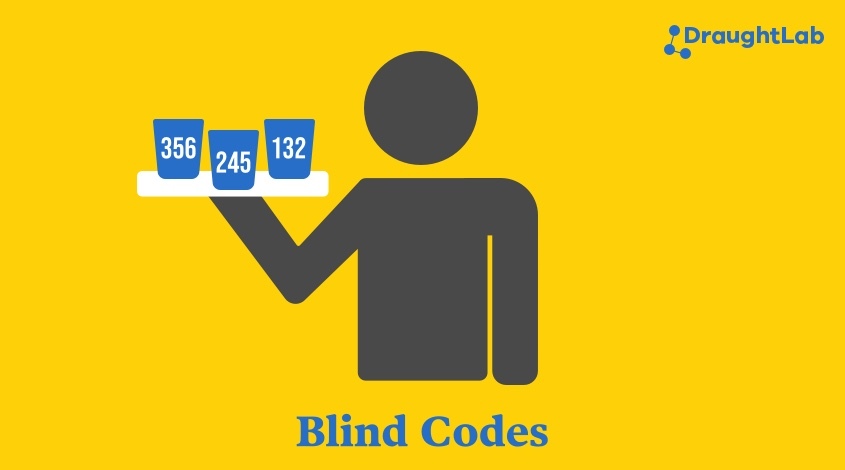
As we’ve discussed in the past, understanding and limiting bias is one of the tougher jobs for a sensory admin. Bias can influence taster feedback and skew results, so admins will use a bunch of different tricks and methods to protect the validity of their tests.
One of these methods is to serve samples “blind,” or without any identifying information. Even seemingly insignificant bits of information like batch number or packaging date could have an impact on judgement, so admins will conceal that information.
It’s relatively easy to keep track of a few unlabeled samples, but what if you have a lot of them? What if the method you’re using requires randomization? This is why Blind Codes are used. They give us a way to label and keep track of samples without giving away any biasing information.
Super helpful, yes, overwhelming and cumbersome… sometimes.
When to Use Blind Codes
The simple answer is, use them when you need them. Blind codes can be a lot of work, but if you are serving blind samples and there is ANY concern that tasters could be served or taste the wrong sample, it’s time.
3-Digit Blind Codes
The bullet-proof method of blind coding that will hold up in research and peer-review settings is the 3-Digit Blind Code. This means giving every individual sample its own randomized 3-digit number to anonymize the sample, obscure any sample patterns, and prevent tasters from looking at other ballots.
The trade-off is that they are a lot of work. Sensory software like DraughtLab Pro can help generate these numbers and pair them to your ballots, but you will still need to physically label or keep track of every sample.
Short Codes
Labeling samples [A,B,C] or [1,2,3] is what we call Short Codes. You can get pretty far with them, especially with simpler tests that don’t require more rigorous results.
Let’s say you want tasters to self-select samples, but you still want to serve them blind. Just label your sample groupings with a short code and have them pair up the sample with the same short code on the ballot.
Blind Codes for Triangle Tests
With triangle tests, the goal is to determine if there is a difference between two samples (A and B). Since three samples are presented and the taster is expected to identify which is different, you can’t use short codes because it would give away the answer (AAB or BAB).
If individually blind coding every sample is too much, you could split the samples up evenly amongst 4 sample codes (2 codes for Sample A, and 2 codes for Sample B). This would allow you to reuse blind code numbers, without giving up the identity of the samples to the taster.
DraughtLab Pro software will optionally support this feature for Triangle and Tetrad tests.
Balancing a Program
As with most things in sensory, you want to match the effort with the results. Nothing burns out a program quicker than doing a ton of work to get a result that doesn’t match the effort put in. If things feel out of balance, blind codes may be a good place to look.
If you want to learn more about blind codes or want to talk out a particular situation, let us know. We would love to chat with you!
DraughtLab offers practical and approachable Sensory Analysis Solutions that deliver real-world value to food and beverage companies. Visit our website or reach out to us at info@draughtlab.com to learn more!